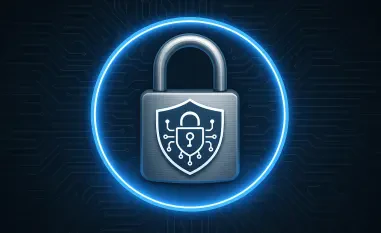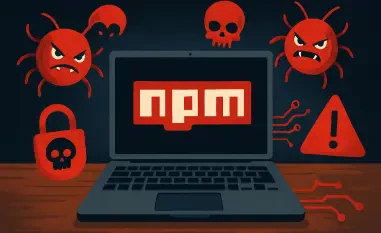Imagine a seemingly harmless message popping up on WhatsApp from a trusted colleague, urging you to download a critical document, unaware that this simple act could unleash a devastating cyber threat. In Brazil, where WhatsApp serves as a cornerstone of daily communication, a new malware campaign named Water Saci, identified as SORVEPOTEL, is exploiting this trust with alarming efficiency. This industry report delves into the intricacies of this self-propagating malware, its impact on Brazilian users and enterprises, and the broader implications for cybersecurity in a digitally interconnected world. By examining the threat landscape, technical mechanisms, and strategic responses, this analysis aims to equip stakeholders with vital insights to combat such evolving dangers.
Overview of the Cyber Threat Landscape in Brazil
Brazil stands as a significant hub in the global digital economy, with widespread adoption of technology amplifying both opportunities and risks. Messaging platforms like WhatsApp are integral to personal and professional communication, boasting millions of active users who rely on the app for everything from casual chats to business dealings. However, this dependency creates fertile ground for cybercriminals who exploit the platform’s accessibility and social trust to distribute malicious content, making it a preferred vector for attacks.
The scope of cybercrime in Brazil is extensive, with financial fraud, data theft, and malware distribution ranking among the most common threats. Attack vectors often include phishing, ransomware, and socially engineered campaigns tailored to local contexts, such as banking scams mimicking Brazilian financial institutions. Key threat actors range from organized crime groups to individual hackers, while defenders encompass government agencies, private cybersecurity firms, and international collaborators working to stem the tide of attacks.
Rapid technological adoption, including the proliferation of mobile devices and Bring Your Own Device (BYOD) policies in workplaces, has heightened vulnerability. As enterprises integrate digital tools into operations, the lack of robust security protocols often leaves systems exposed. This dynamic underscores the urgent need for enhanced cybersecurity measures in a region where digital transformation is both a boon and a bane, setting the stage for sophisticated threats like Water Saci to thrive.
Understanding the Water Saci Malware Campaign
Key Characteristics and Propagation Tactics
Water Saci, identified by its technical name SORVEPOTEL, represents a new breed of malware designed for rapid spread through WhatsApp. It operates primarily via WhatsApp Web on Windows systems, using phishing messages that trick users into downloading malicious ZIP files disguised as legitimate documents. These messages often appear to originate from trusted contacts, capitalizing on social trust to bypass suspicion and initiate the infection process.
The malware’s self-propagating nature is particularly concerning, as it automates the distribution process by hijacking active WhatsApp Web sessions. Once a system is compromised, it sends the malicious ZIP file to all contacts and groups associated with the victim’s account, creating an exponential spread that often results in account bans due to spam violations. This automation, combined with a focus on desktop environments, suggests a deliberate targeting of enterprise users where impact can be maximized.
Emerging trends in malware distribution highlight a shift toward messaging apps as primary attack vectors, moving away from traditional email phishing. Water Saci exemplifies this evolution by leveraging the immediacy and familiarity of chat platforms. Its ability to operate with minimal user interaction, coupled with sophisticated scripting and payload delivery, marks a significant challenge for conventional security tools, necessitating adaptive defense strategies.
Impact and Target Analysis
The regional focus of Water Saci is overwhelmingly centered on Brazil, with telemetry data revealing that 457 out of 477 detected cases originate in the country. This concentration is no accident; the malware includes geolocation checks to ensure execution primarily within Brazilian borders, tailoring its phishing content and payloads to local users. Financial institutions and cryptocurrency platforms, including major banks and exchanges, are the primary targets for credential theft.
Beyond finance, the campaign affects a broad spectrum of sectors, including government, manufacturing, education, and technology. Enterprises in these fields face not only the risk of data breaches but also operational disruptions as malware spreads through corporate networks. The focus on desktop systems further indicates an intent to infiltrate organizational environments, where sensitive data and interconnected systems amplify the potential for damage.
Projections suggest significant financial and operational fallout if the campaign continues unchecked. Losses could stem from stolen credentials leading to fraudulent transactions, as well as downtime and recovery costs for affected organizations. With Brazil’s economy heavily reliant on digital transactions, the ripple effects of such a threat could undermine consumer confidence and strain institutional resources, highlighting the stakes involved in curbing this malware’s reach.
Challenges in Combating Water Saci Malware
Detecting and mitigating Water Saci poses formidable obstacles due to its advanced evasion techniques. The malware employs obfuscated domains and typo-squatting tactics, such as mimicking benign Brazilian phrases, to disguise its malicious infrastructure. Additionally, anti-analysis checks terminate the malware if debugging tools are detected, making it difficult for researchers to dissect and counter its operations effectively.
User awareness remains a critical weak point, especially in enterprise settings where employees may not recognize phishing attempts disguised as messages from familiar contacts. The social engineering aspect of Water Saci exploits human behavior, bypassing technical defenses by convincing users to initiate the infection themselves. This challenge is compounded by the sheer volume of messages sent through compromised accounts, overwhelming manual monitoring efforts.
Securing BYOD environments adds another layer of complexity, as personal devices often lack the stringent controls of corporate systems. Traditional security tools struggle against socially engineered attacks that rely on user interaction rather than system vulnerabilities. As a result, organizations face an uphill battle in balancing accessibility with protection, requiring a shift toward proactive education and modern security frameworks to address these nuanced threats.
Regulatory and Security Framework in Response
Brazil’s cybersecurity landscape is shaped by regulations like the General Data Protection Law (LGPD), which establishes strict guidelines for data handling and breach reporting. While not directly targeting malware, LGPD’s emphasis on data protection compels organizations to bolster their defenses against campaigns like Water Saci that aim to steal sensitive information. Compliance with such laws is a critical first step in mitigating legal and financial repercussions of cyber incidents.
Organizational security measures are equally vital, with app whitelisting emerging as a practical solution to restrict unauthorized software on devices. User training programs focused on recognizing phishing attempts and avoiding suspicious attachments can significantly reduce infection rates. Enterprises are also encouraged to implement secure communication channels for document transfers, minimizing reliance on personal messaging apps for business purposes.
Collaboration between public and private sectors is essential to address sophisticated threats on a national scale. Government initiatives to enhance cyber resilience, paired with private industry expertise in threat intelligence, can create a unified front against malware campaigns. By fostering information sharing and investing in advanced detection tools, Brazil can strengthen its cybersecurity posture, ensuring a more robust response to evolving dangers.
Future Outlook for Malware Threats on Messaging Platforms
Looking ahead, Water Saci may serve as a blueprint for similar malware campaigns, potentially adapting to other messaging platforms or expanding beyond Brazil. Threat actors are likely to refine their tactics, targeting regions with high penetration of chat apps and tailoring phishing content to local languages and cultural norms. This adaptability could lead to a global escalation of such threats over the next few years, from 2025 onward.
Emerging cybersecurity technologies, such as artificial intelligence-driven threat detection and behavioral analysis, offer promising avenues for defense. These tools can identify anomalous user activity and block malicious payloads before they execute, countering the automation that fuels campaigns like Water Saci. However, their adoption must keep pace with the rapid innovation of cybercriminals to remain effective in dynamic threat landscapes.
Shifting consumer and employee behaviors, alongside global economic and regulatory trends, will also influence the trajectory of messaging-based malware. As remote work and digital communication continue to grow, the attack surface expands, necessitating stricter policies and international cooperation. Economic pressures may drive more organizations to prioritize cybersecurity investments, while evolving regulations could enforce accountability, shaping a future where resilience against such threats becomes a collective priority.
Conclusion and Strategic Recommendations
Reflecting on the insights gained from analyzing the Water Saci malware campaign, it becomes evident that Brazilian users and enterprises face a formidable adversary exploiting the very tools relied upon for connectivity. The campaign’s regional focus, technical sophistication, and impact on critical sectors paint a stark picture of the vulnerabilities inherent in modern digital ecosystems. This examination highlights how social trust, when weaponized, can bypass even well-established defenses.
Moving forward, actionable steps emerge as crucial for mitigating such threats. Organizations need to prioritize disabling auto-downloads on messaging apps to prevent accidental exposure to malicious content, while promoting secure, approved channels for sensitive communications. Leveraging advanced security platforms like Trend Vision One for centralized threat prevention and detection offers a robust shield against novel attacks. Additionally, fostering a culture of cybersecurity awareness through regular training ensures that employees remain vigilant against phishing attempts.
Looking toward future considerations, it is imperative to anticipate the evolution of similar malware by investing in predictive technologies and fostering cross-sector collaboration. Governments and private entities must align on shared intelligence frameworks to outpace threat actors adapting to new platforms. By embracing these strategies, stakeholders can transform past challenges into a foundation for enduring digital safety, safeguarding Brazil and beyond from the next wave of cyber threats.













